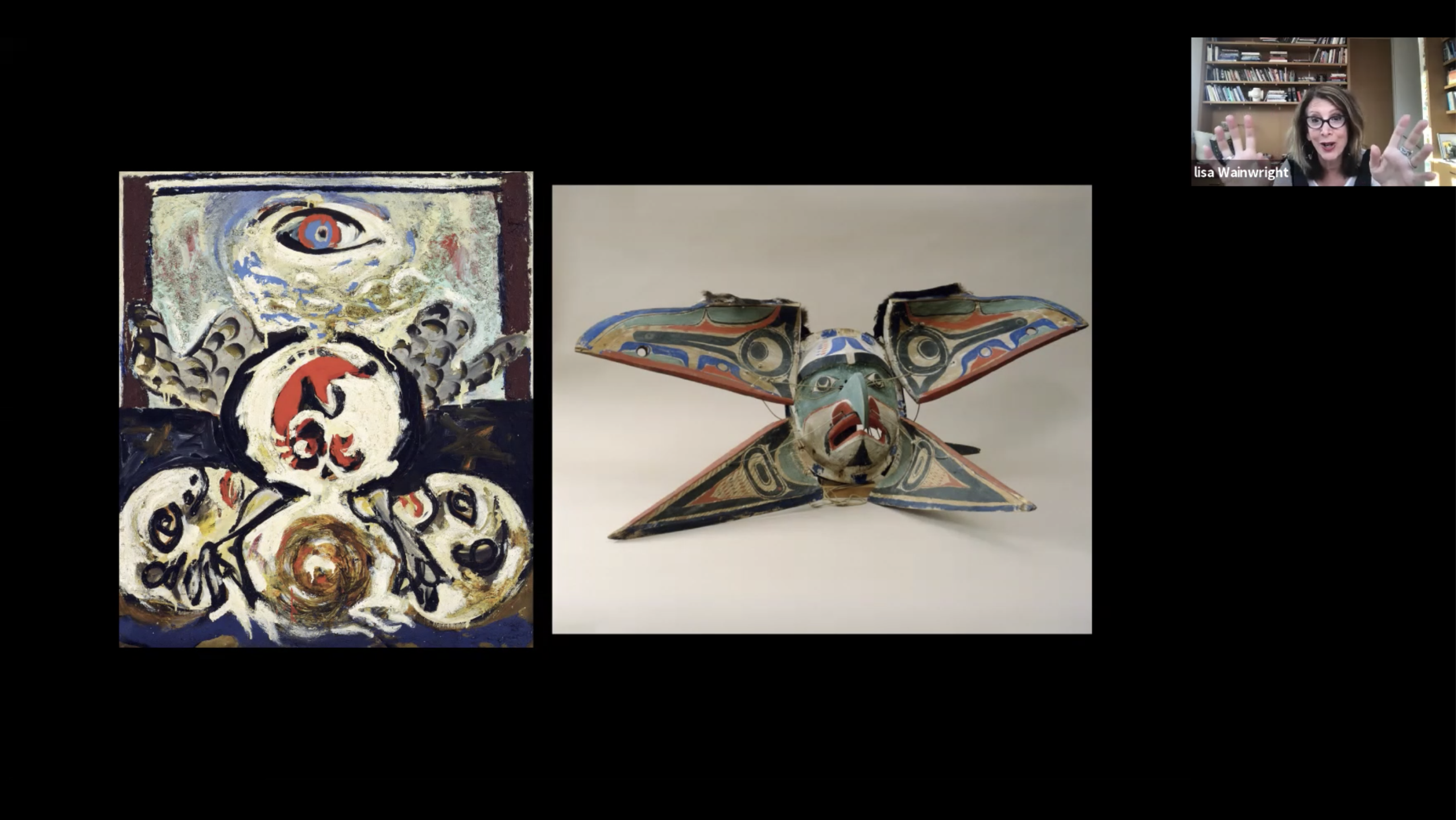Giving Supporters a Unique
SAIC Experience

Professor Lisa Wainwright gives a lecture to her Distinguished Scholar Circle students.
Professor Lisa Wainwright gives a lecture to her Distinguished Scholar Circle students.
by Rowan Beaird
No matter what organization you support, engagement with supporters often looks very similar: galas and receptions to attend, communications filled with case studies and statistics that support the cause. Those who support educational institutions like the School of the Art Institute of Chicago (SAIC) rarely get to experience what the students experience—to understand the transformational power of an art and design education firsthand.
In the spring of 2020, Professor and former Dean of Faculty Lisa Wainwright wanted to change that. Under Illinois’s stay-at-home order, she felt as if so much of existence was being defined by what was no longer possible. “Restrictions here and restrictions there. We are not going to be able to do this and we are not going to be able to do that,” she shared. “I wanted to turn that around a little bit and say okay, what will this allow that we have never been able to do before?”
The COVID-19 pandemic had moved SAIC’s courses online for the remainder of the spring semester, and faculty members were altering their classes to work within that format. This gave Wainwright an idea: why not offer courses to those who want to support the School? The classes would give supporters a true window into life at SAIC. And all funds raised would go directly to the Walter and Shirley Massey Chicago Scholarship Fund during a time when financial support was greatly needed. This fund supports need-based scholarships for students from Chicago.
Wainwright’s first task was to see which of her colleagues in the Department of Art History, Theory, and Criticism would be open to participating. “This is the brilliant part of the project: all of my colleagues absolutely, unfailing said yes, we would love to raise scholarship money,” she said. “It was just such a positive, collegial moment for all of us.” They decided to call the project the Distinguished Scholars Circle.
“The Distinguished Scholars Circle provided an unprecedented opportunity. We were introduced to the work of artists we did not know, explored the techniques used to make art in all its various forms and mediums, and learned the historical underpinnings of current concepts.”
With supporter interests in mind, Wainwright chose a selection of courses on topics ranging from the issue of removing monuments to the polemic around cultural appropriation. In addition to her department, Professor Eduardo Kac from Art and Technology Studies and Professor Raja El Halwani from Liberal Arts also offered to teach. Once a course catalog was set, Wainwright worked alongside the Office of Advancement to reach out to the School’s network of supporters.
The classes were very popular. “This is access to top scholars. This is an opportunity to study with scholars who they would really not have access to otherwise,” Wainwright said. During the first semester, they signed up more than 30 students.
Each course offered to supporters was just as rigorous as those with SAIC’s degree-seeking students. “This wasn’t fluff, this was hardcore teaching,” Wainwright shared. “I think they dug that also. They liked that intensity. They liked the challenge. They liked having a small community where they could come together and really talk about substantial ideas.” In addition to weekly classes, supporters also had access to a series of lectures by Professor Jim Elkins called Theories and Problems in Art. Elkins created 56 in total, on everything from postmodernism to political art.
"The Distinguished Scholars Circle provided an unprecedented opportunity,” shared supporters Charles and Bobbi Price. “We were introduced to the work of artists we did not know, explored the techniques used to make art in all its various forms and mediums, and learned the historical underpinnings of current concepts. But most importantly, we began to learn how to use our eyes to really see—to see that art in all its forms enables us to understand and experience our world in new and different ways. "
Over two semesters, 60 supporters took classes at the School, which raised $60,000 for student scholarships. At the end of their courses, supporters gained not only a deeper knowledge of art history but also a deeper connection to the School. “We’re really fortunate to have such incredible donors,” Wainwright said. “They are invested learners themselves, and they’re also invested in our School, our faculty, and our students.” ■
{{[http://www.saic.edu/news/facultystaff]FACULTY & STAFF}} {{[http://www.saic.edu/news/artconnectsus]ART CONNECTS US}}
